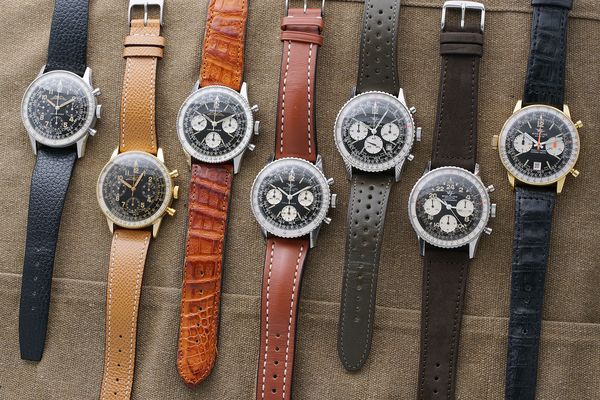- By Isabella Proia
At first glance, the dial of the Breitling Navitimer can be a bit of a mystery with its various scales. Billed as a wrist-sized computer when it was first developped in 1952, the rotating bezel holds the ability to compute distance traveled, flight time, airspeed, and remaining fuel consumption due to the integration of a slide rule. For reference, the pocket-sized electronic calculator did not come into widespread use until the 1970s. The slide rule, initially developed in the 17th century, held the monopoly on complex calculations for the next three hundred years. In the 1930s and 1940s, pilots were using the E6B flight computer, a flat circular slide rule made of cardboard or metal, to make calculations relating to aviation. Indeed, to one familiar only with wristwatches (like the author), the E6B looks very familiar, almost as though someone miniaturized it and placed it on the dial of a chronograph wristwatch.
Breitling was the first watch company to place a slide rule on the dial of a chronograph already in 1940 with the Chronomat and forever altering the destiny of the manufacture. Since its first development in 1952, the Navitimer has been the flagship watch of the Grenchen-based brand, and though it has been mechanically altered and improved throughout the years, it has never faltered in its role as a navigational aide and icon of modern horology. Vintage Navitimers follow the general rules of wristwatch collecting: the rarer, earlier, and well-preserved, the better.
Later this month, Phillips will have the pleasure of offering a great example of the Cosmonaute - the first Navitimer model worn in Space. In anticipation of the sale, and in order to better understand the Navitimer and why they are becoming increasingly collectible, we gathered some of the most important and influential models, going back all the way to the beginning, with the first generation Navitimer effectively released in 1954.
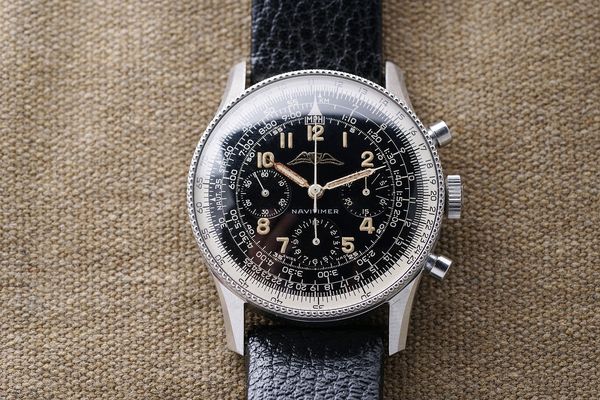
The first Navitimers ever produced were intended for the sole use by members of the Aircraft and Pilot Association (commonly referred to as the AOPA). They do not bear any reference numbers on the caseback, and were produced for only one year, from late 1954 until 1955. These are incredibly rare and highly prized by collectors. This “pre-806”, as it is called by collectors, is powered by the much-lauded Valjoux 72 manually wound chronograph movement.
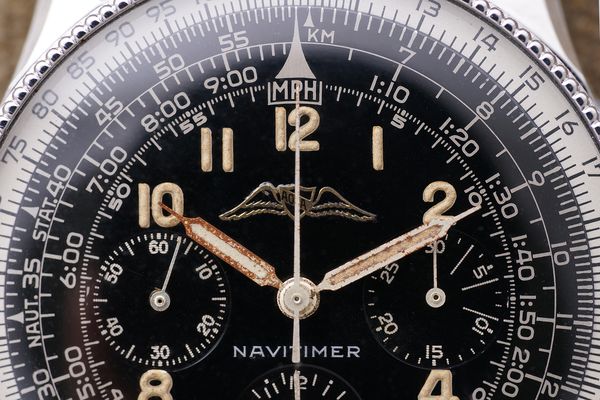
The beaded bezel, made for gripping with a leather glove whilst making in-flight calculations, features smaller beads (about 125 beads to be exact) than later iterations. They were marketed directly to AOPA members for the grand sum of $87.50. This early iteration and its immediate successor both have “all black” dials, as future Navitimers would have contrasting subdials, another signature from Breitling chronographs meant for further improving legibility.

In 1956, wishing to capitalize on the Navitimer’s success within the aviation community, Breitling released what was now called the reference 806. Instead of a Valjoux 72 movement, the 806 housed a Venus 178 manually-wound chronograph movement, which would continue to be used until the early 1970s. Still with black subdials, the reference 806 otherwise had several dial variations, as Breitling experimented with new markets and layouts.
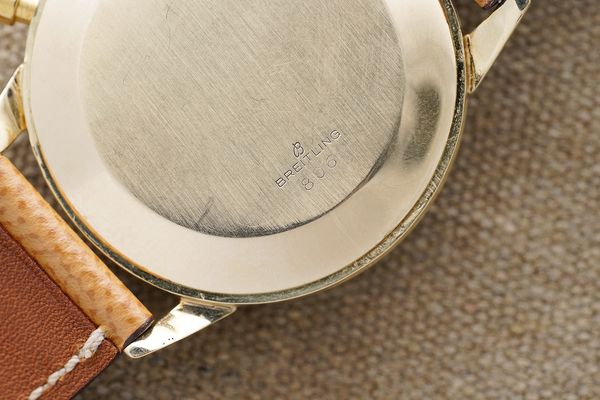
These include the AOPA signed wings of the early 806, a configuration only meant for the American market, unsigned wings and the Breitling logo, and a Breitling – Genève – wings combination. The actual Breitling signature only became present on the dial in the late 1950s, so early iterations of the reference 806 do not display the manufacture. The beads on the bezel got larger and decreased in number, likely to increase friction. Advertisements of the era bill the Navitimer as the “chronograph of the future” and declared unequivocally that “the Navitimer is your co-pilot.” Bringing a more luxurious touch to this pilots' instrument, a gold-plated version was also made, as well as an extremely rare execution crafted in solid gold.

After about eight years Breitling once again changed the dial layout of the Navitimer, likely adapting to changing tastes and increasing legibility in low-light conditions. The now-iconic “reverse panda” configuration with black dial and white subdials is introduced in 1963. For one year, the “reverse panda” dial remained in the earlier 806 case with a beaded bezel (93 beads for these two iterations).

The handset was also updated from luminous, syringe-style hands to arrow-tipped baton hands. This extremely rare transitional reference 806, seen here paired with the unsigned AOPA logo and Breitling signature, was only in production for one year.

A more drastic change occurs in 1964, when Breitling decides to forgo the beaded bezel forever and replaces it with the milled edge bezel. Another stylistic change with the introduction of the “twin jet” logo is implemented, with Breitling Genève below this new logo.

Subdials are at first the same diameter as earlier generations, but are eventually replaced with larger versions, again with the sole purpose to always improve legibility and functionality. Notably, Navitimers with the AOPA logo will continually be produced, but are no longer the mainstay of the dial.
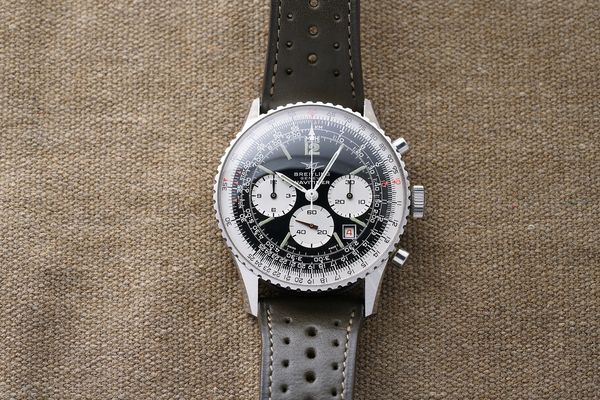
Adding fuel to the fire of contemporary date window versus no date window debates, Breitling debuts the reference 7806 in 1972 – the first Navitimer with a date display at half past four o’clock. The movement is now a Valjoux 7740 and the hour counter at six o’clock is replaced by a sweep seconds counter.
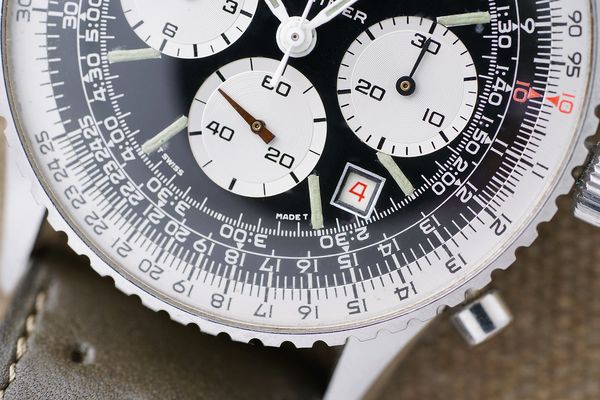
The “twin jet” logo is now ubiquitous, and Navitimer appears below the signature, rather than above the hour counter. Instead of being bichromatic, Breitling introduces hints of color to the date window and elements of the slide rule.

Another rare version is the reference 809 – the Cosmonaute. In the early 1960s, Scott Carpenter was preparing for the Mercury mission and wearing a Navitimer, but realized that the dark environs of space may be disorienting. He approached Breitling about creating a Navitimer with a 24-hour dial to help tell night from day when in Space, and in 1962, Breitling produces exactly that, naming it the Cosmonaute and featuring an all-black dial similar to the early 806 and and enlarged beaded bezel to help manipulate the watch with gloves.
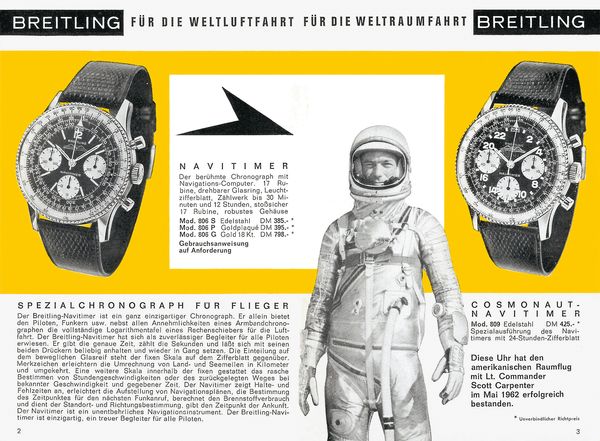
Scott Carpenter indeed wore this watch provided by Breitling during the Aurora 7 mission, precisely on May 24, 1962, making it the first Swiss wrist-worn chronograph in space. While this version with an enlarged bezel was only produced for not even a year and is extremely rare, the Cosmonaute then followed the same esthetic evolution as the Navitimer, later featuring a “twin jet” logo and contrasting sub‐registers on the dial.
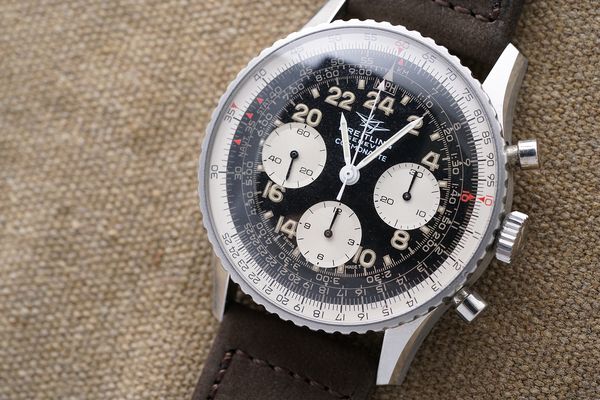
The "small case" manually-wound Navitimer is joined by two up-sized companions in 1969, with the automatic reference 1806 and the manual reference 816, both in the so called “Pizza” case of 48mm in diameter. A “small case” automatic version also is released in early 1973, with introduction of the reference 8806. Using the “Chrono-Matic” movement, developed in partnership with Heuer and Buren, the setting crown is moved to the left side of the case and the date aperture migrates to 6 o’clock. Measuring 48mm in diameter, an up-sized companion automatic Navitimer would also be released, the reference 8806. Much more than being simply an essential tool for pilots, the Navitimer graced the wrist of famous sportsmen such as Formula 1 racers Graham Hill and James Clark, but also legendary musicians such as Miles Davis.
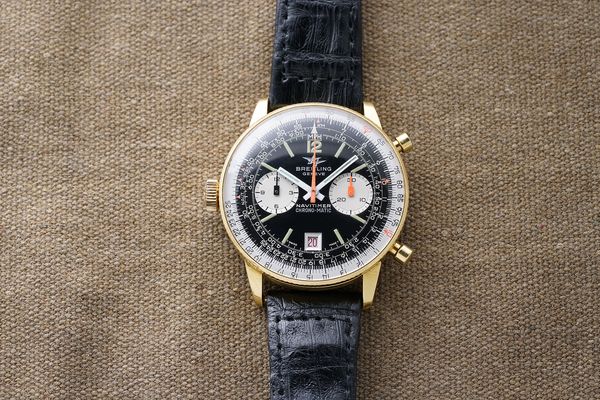
Breitling continued to experiment with the funky color schemes and case designs throughout the 1970s until the relaunch of the icon in 1985 with the new reference 81600 now relying on a Lemania‐born manual‐wound chronograph movement. This exact watch will be worn by the French musician Serge Gainsbourg. Its immediate success proved that the Navitimer remained all the more relevant, and underlined its status as one of the icons of watchmaking. The overall commercial success of the Navitimer helped the manufacture weather the harsh realities of the Quartz Crisis, and proves a mainstay of the brand to this day.
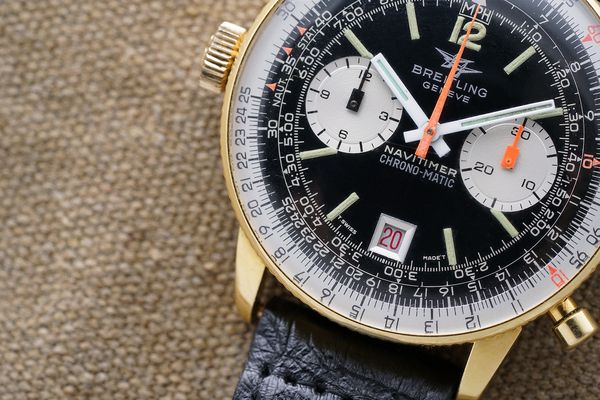
Phillips in Association with Bacs & Russo would like to thank Louis Westphalen, Nicolas Chambron and the entire Breitling Heritage department for their invaluable help and contribution to this story.
